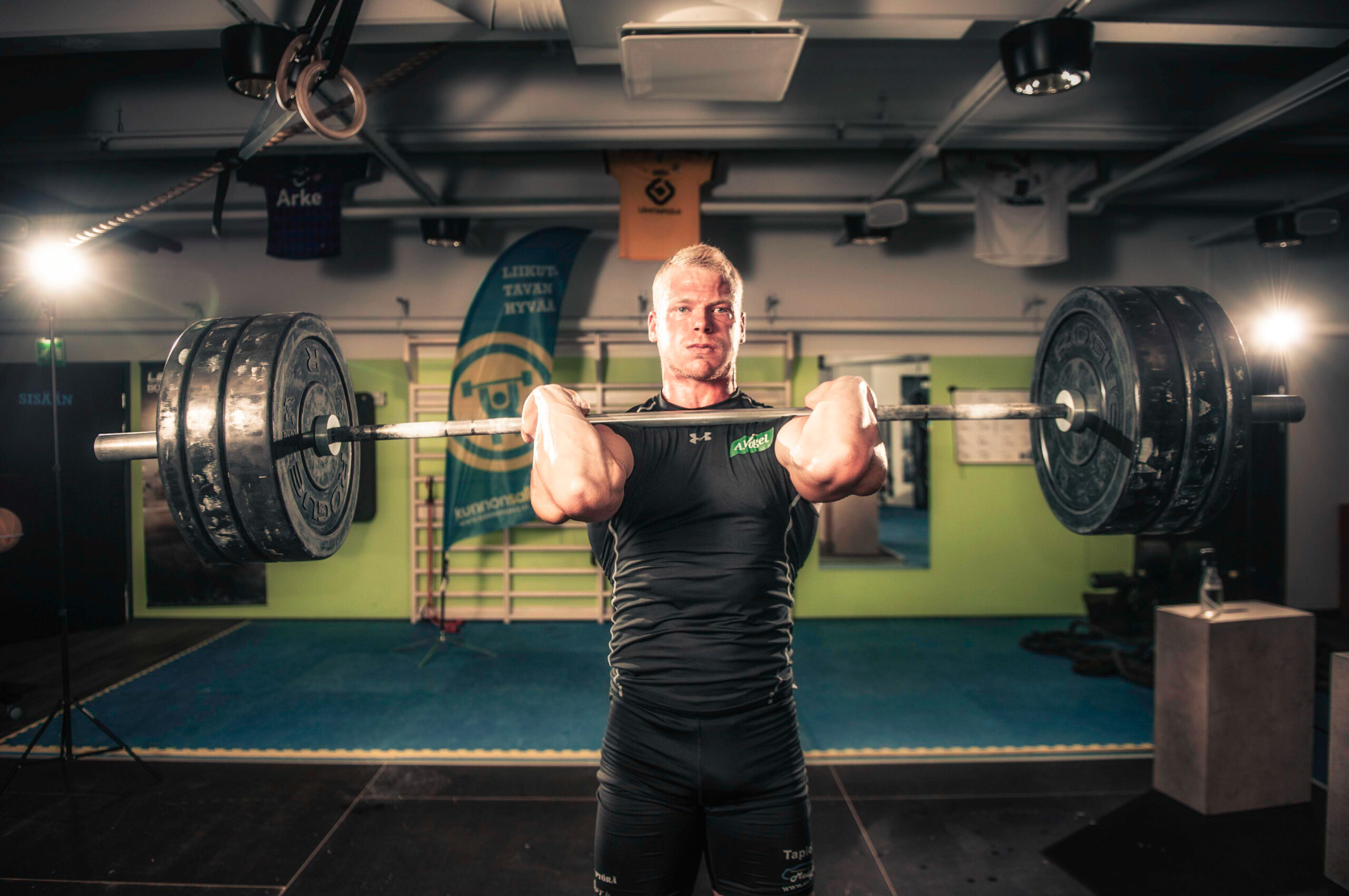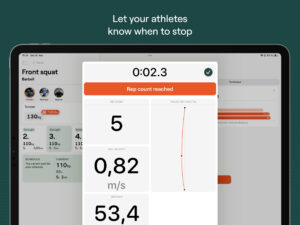Table of content
In the previous article in this series, we’ve seen that we can use mean, mean propulsive, and peak velocity to monitor and prescribe resistance training, usually after establishing load-velocity profiles of our athletes or clients. Even before that, we’ve seen that load-velocity profiles are useful as they allow us to modulate the training loads of our athletes and clients daily, based on their readiness to train. Let’s now cover how we can use movement velocity to monitor the degree of fatigue experienced during a set and terminate the training sets based on different velocity loss cut-offs.
The utility of monitoring velocity loss during resistance training
When we talked about why we should monitor movement velocity during resistance training, we said that movement velocity can be interpreted as an objective “signal” telling us that we’re experiencing fatigue. Taking a bench press as an example, let’s say that you aimed to do 10 repetitions with a given load. Halfway through the set, you realize that your repetitions slowed considerably compared to the first. Based on this “signal”, you could then decide to either change the training load or do fewer or more repetitions while having your training goals in mind. This is just a long way of saying that monitoring velocity loss during resistance training will mimic the degree of fatigue experienced during the set. So, just as we can’t lift higher loads with the same velocity (i.e., velocity will drop as we increase the load based on the inverse load-velocity relationship) if we perform the exercise with maximal effort for multiple consecutive repetitions, we will fatigue, and our movement velocity will inevitably drop. Indeed, very strong relationships exist between intra-set velocity loss and mechanical, perceptual, and metabolic markers of fatigue [1, 2].
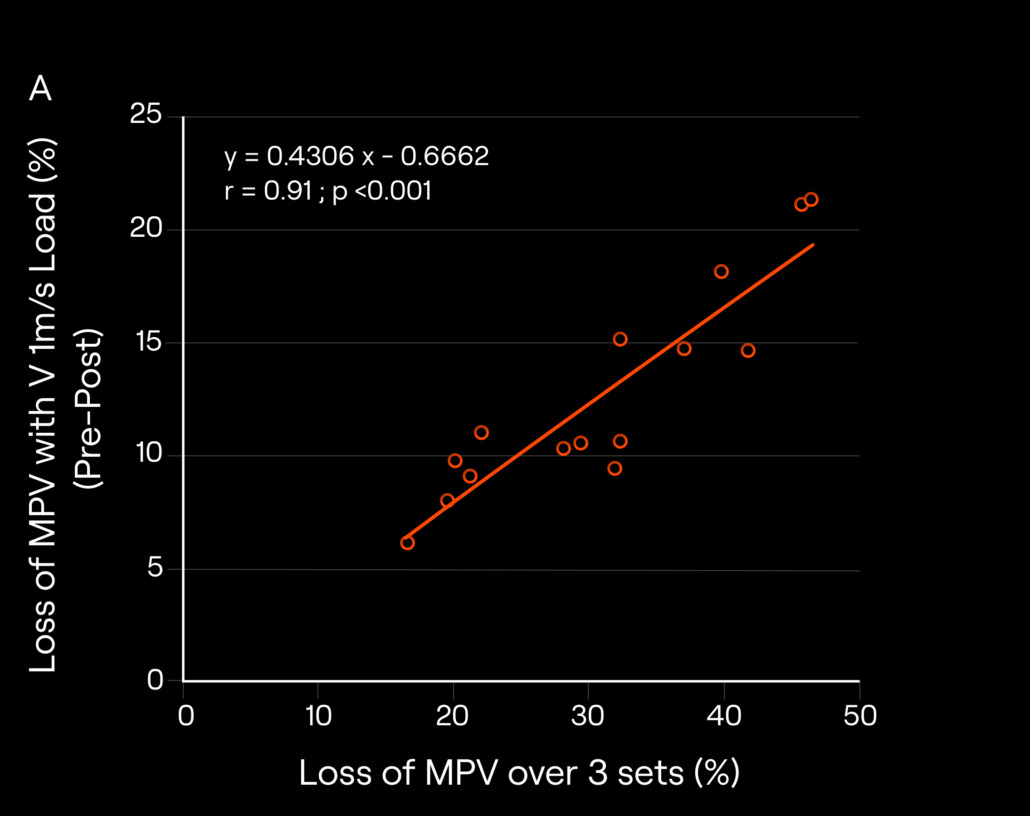
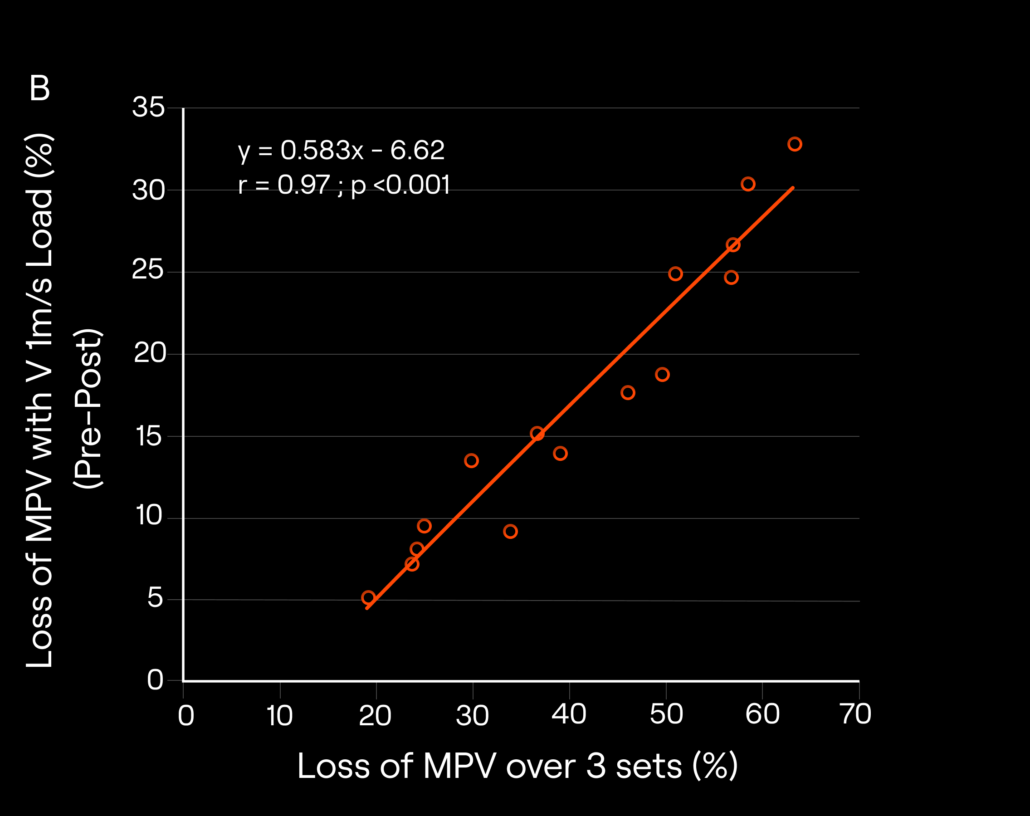
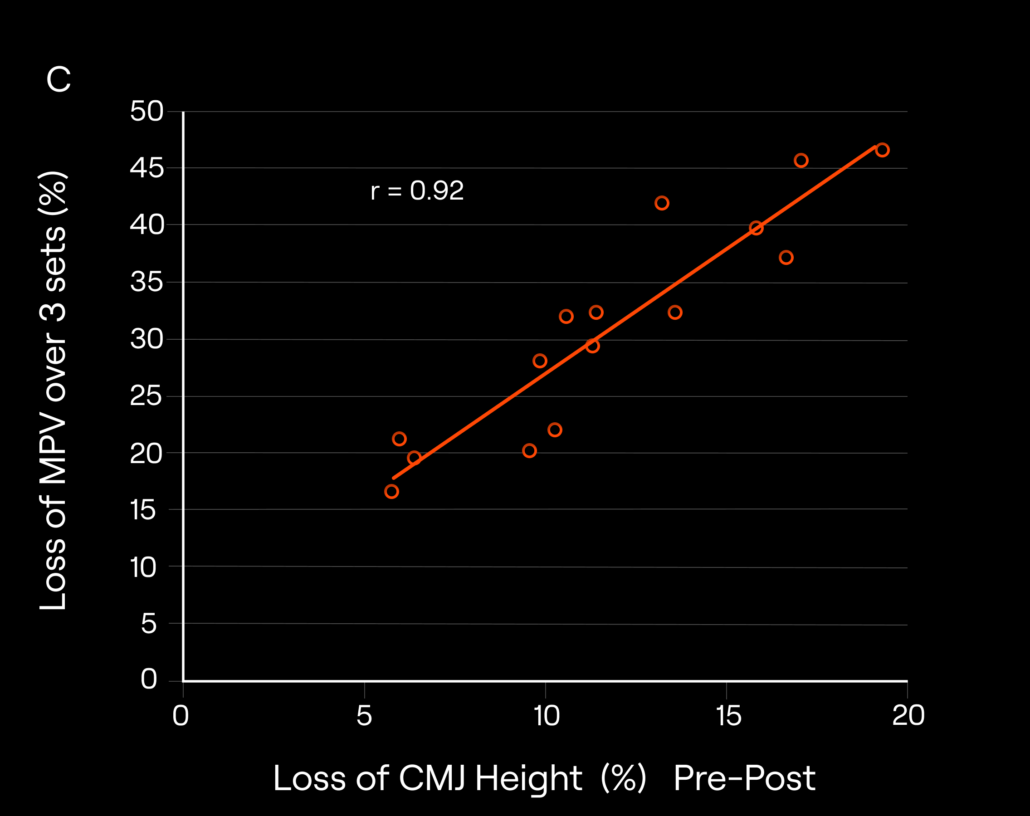
Sanchez-Medina and Gonzalez-Badillo [1] did one of the first comprehensive studies looking at the acute responses to different amounts of velocity loss (i.e., thresholds) experienced during resistance training. In this study [1], the researchers designed different resistance training protocols for the bench press and back squat exercises such that each protocol differed in 1) the number of repetitions performed per set; and 2) the proximity to failure when the set was terminated. They studied the velocity loss the participants experienced after completing those protocols and the relationship between velocity loss experienced with blood lactate and ammonia concentrations as well as the countermovement jump height loss and velocity loss against a fixed load (i.e., the load that they could lift at 1 m/s in a fresh state).
Those tests were performed before and after completing the above-mentioned resistance training protocols. Since the amount of velocity loss experienced by participants was highly correlated with all other markers of fatigue examined after training, the researchers concluded that the loss of repetition velocity could be used as an objective indicator of the extent of metabolic stress and neuromuscular fatigue induced by typical resistance training sessions. Other researchers reported similar findings while also showing that 1) increases in velocity loss result in gradual increases in perceived exertion and breathlessness after each set [3]; and 2) the higher magnitude of velocity loss impairs post-exercise recovery 24 and 48 hours later [4]. Therefore, it is evident that monitoring the velocity loss of your athletes and clients during resistance training can help you educate your training decisions.

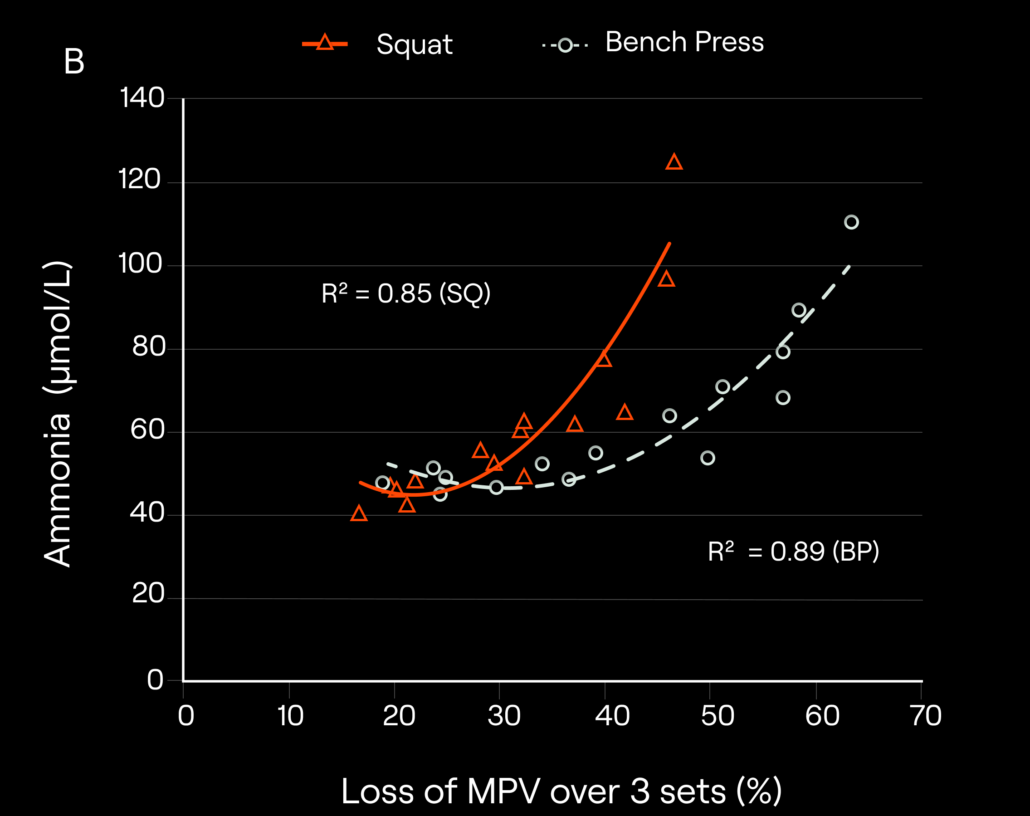
How should we calculate velocity loss?
How do we calculate velocity loss and use it to prescribe resistance training? Well, we certainly can use it to prescribe resistance training, but let’s address how to calculate it first. We previously stressed the importance of providing maximal intent during resistance training, that is moving through the concentric phase of a given exercise as fast as possible. Assuming we do that, our first repetitions should theoretically be the fastest. For this reason, many researchers and practitioners calculate velocity loss by comparing every repetition performed to the first

or comparing the last repetition to the first [1, 2] to get the velocity loss experienced in the entire set

However, there is some research out there suggesting that we should always compare repetitions to the fastest repetition in the set

instead [5]. This is because first repetitions can sometimes be a touch slower than the second or third one as athletes often mis groove their first repetition for many reasons. Therefore, our best bet is to use the fastest repetition to calculate the percentage drop in velocity.
How to prescribe resistance training using velocity loss and how much loss should we allow to maximise performance gains?
Now that we know how to determine velocity loss, let’s see how we can use it to prescribe resistance training. The most simplistic way would be to just prescribe the exercises, number of sets, and loads, and loads for our athletes as we normally would, based on their training goals, but instead of prescribing a fixed number of repetitions (e.g., 5 sets of 8 repetitions in a bench press exercise with 70% of 1RM), we would prescribe velocity loss “allowed” in a set. This “allowed” means that our athletes or clients would continue performing repetitions, in a back squat exercise for example, until they observe a predetermined loss in barbell velocity.
You might be asking, what velocity loss threshold should you use with your athletes or clients? The answer to that question, like to others in sport and exercise science, is “It depends”. Of course, it depends upon the goal you’re trying to achieve with your athletes or clients. According to the latest literature on the chronic effects of different velocity loss thresholds [6], it seems that prescribing low to moderate VL thresholds (e.g., 15-25%) during resistance training seems to be a more advantageous option compared with higher velocity loss thresholds (e.g., more than 25%) for optimizing muscle strength, power, and endurance, as well as jumping and sprint performance. This is an important finding because low to moderate velocity loss thresholds generally result in much less training volume completed. Essentially, this means that low to moderate velocity loss thresholds are not only advantageous in terms of performance gains, but they are also more time efficient compared to higher velocity loss thresholds.

Now, you would probably expect that higher velocity loss thresholds (e.g., 25% or more) lead to greater gains in muscle hypertrophy. And you would indeed be correct. This is not surprising given that training volume is the main driver of muscle hypertrophy [7]. However, it is important to keep in mind that prescribing higher velocity loss thresholds can impair rapid force production capability, reduce the expression of fast-twitch muscle fibers, and prolong recovery [8, 9]. Therefore, if hypertrophy is also the goal in a training program, perhaps increasing the number of sets our athletes or clients should do rather than increasing the velocity loss allowed in a set could be a viable strategy for optimizing performance gains while minimizing fatigue accumulation and avoiding negative effects associated with it. Unfortunately, this contention hasn’t been researched yet, so we need to take it with a grain of salt. Some of you might now be asking why we can’t simply prescribe very low-velocity loss thresholds (e.g., 10% or less) to avoid the potentially negative effects of fatigue. Well, some fatigue is needed to induce positive training adaptations and in fact, extremely low-velocity loss thresholds have been shown to lead to suboptimal training adaptations in some cases [9]. Nevertheless, we can still appreciate how the choice of velocity loss threshold can influence the training adaptations of our athletes or clients.
Conclusion and what’s next
Considering everything we covered above; it seems like velocity loss thresholds definitely deserve their place in our coaching toolbox. Monitoring velocity loss during resistance training allows us to gauge the degree of fatigue our athletes or clients are experiencing in the training sets we prescribe to them. This information can be used to modify our workouts “on the go”, but also to inform our decisions related to future workouts and perhaps recovery strategies. Additionally, instead of prescribing a fixed number of repetitions to be completed in a set, we can simply prescribe velocity loss “allowed” in a set. As we’ve seen above, selecting the “right” velocity loss threshold for the intended training adaptation is important, but to do that, we need to start monitoring velocity loss and using it to prescribe workouts for our athletes and clients.
Ok, we now covered how can we use movement velocity during resistance training to gauge the degree of fatigue experienced in a training set, but also how to prescribe workouts based on velocity loss which determines the volume of work completed in a training set more locally and a training session more globally. However, there are other ways we can use movement velocity to prescribe set volume during resistance training, which might even be superior to velocity loss thresholds. We will leave those for the next article in the series, so stay tuned!
References
- Sanchez-Medina, L., & González-Badillo, J. J. (2011). Velocity loss as an indicator of neuromuscular fatigue during resistance training. Medicine and Science in Sports and Exercise, 43(9), 1725-1734.
- González-Badillo, J. J., Yañez-García, J. M., Mora-Custodio, R., & Rodríguez-Rosell, D. (2017). Velocity loss as a variable for monitoring resistance exercise. International Journal of Sports Medicine, 38(03), 217-225.
- Weakley, J., McLaren, S., Ramirez-Lopez, C., García-Ramos, A., Dalton-Barron, N., Banyard, H., … & Jones, B. (2020). Application of velocity loss thresholds during free-weight resistance training: Responses and reproducibility of perceptual, metabolic, and neuromuscular outcomes. Journal of Sports Sciences, 38(5), 477-485.
- Pareja-Blanco, F., Villalba-Fernández, A., Cornejo-Daza, P. J., Sánchez-Valdepeñas, J., & González-Badillo, J. J. (2019). Time course of recovery following resistance exercise with different loading magnitudes and velocity loss in the set. Sports, 7(3), 59.
- Jukic, I., García-Ramos, A., & Tufano, J. J. (2023). Velocity-based resistance training monitoring: Influence of lifting straps, reference repetitions, and variable selection in resistance-trained men. Sports Health, 15(3), 333-341.
- Jukic, I., Castilla, A. P., Ramos, A. G., Van Hooren, B., McGuigan, M. R., & Helms, E. R. (2023). The acute and chronic effects of implementing velocity loss thresholds during resistance training: a systematic review, meta-analysis, and critical evaluation of the literature. Sports Medicine, 53(1), 177-214.
- Schoenfeld, B. J., Ogborn, D., & Krieger, J. W. (2017). Dose-response relationship between weekly resistance training volume and increases in muscle mass: A systematic review and meta-analysis. Journal of Sports Sciences, 35(11), 1073-1082.
- Pareja‐Blanco, F., Rodríguez‐Rosell, D., Sánchez‐Medina, L., Sanchis‐Moysi, J., Dorado, C., Mora‐Custodio, R., … & González‐Badillo, J. J. (2017). Effects of velocity loss during resistance training on athletic performance, strength gains and muscle adaptations. Scandinavian Journal of Medicine & Science in Sports, 27(7), 724-735.
- Pareja-Blanco, F., Alcazar, J., Sánchez-Valdepeñas, J., Cornejo-Daza, P. J., Piqueras-Sanchiz, F., Mora-Vela, R., … & Alegre, L. M. (2020). Velocity loss as a critical variable determining the adaptations to strength training. Medicine and Science in Sports and Exercise, 52(8), 1752-1762.

